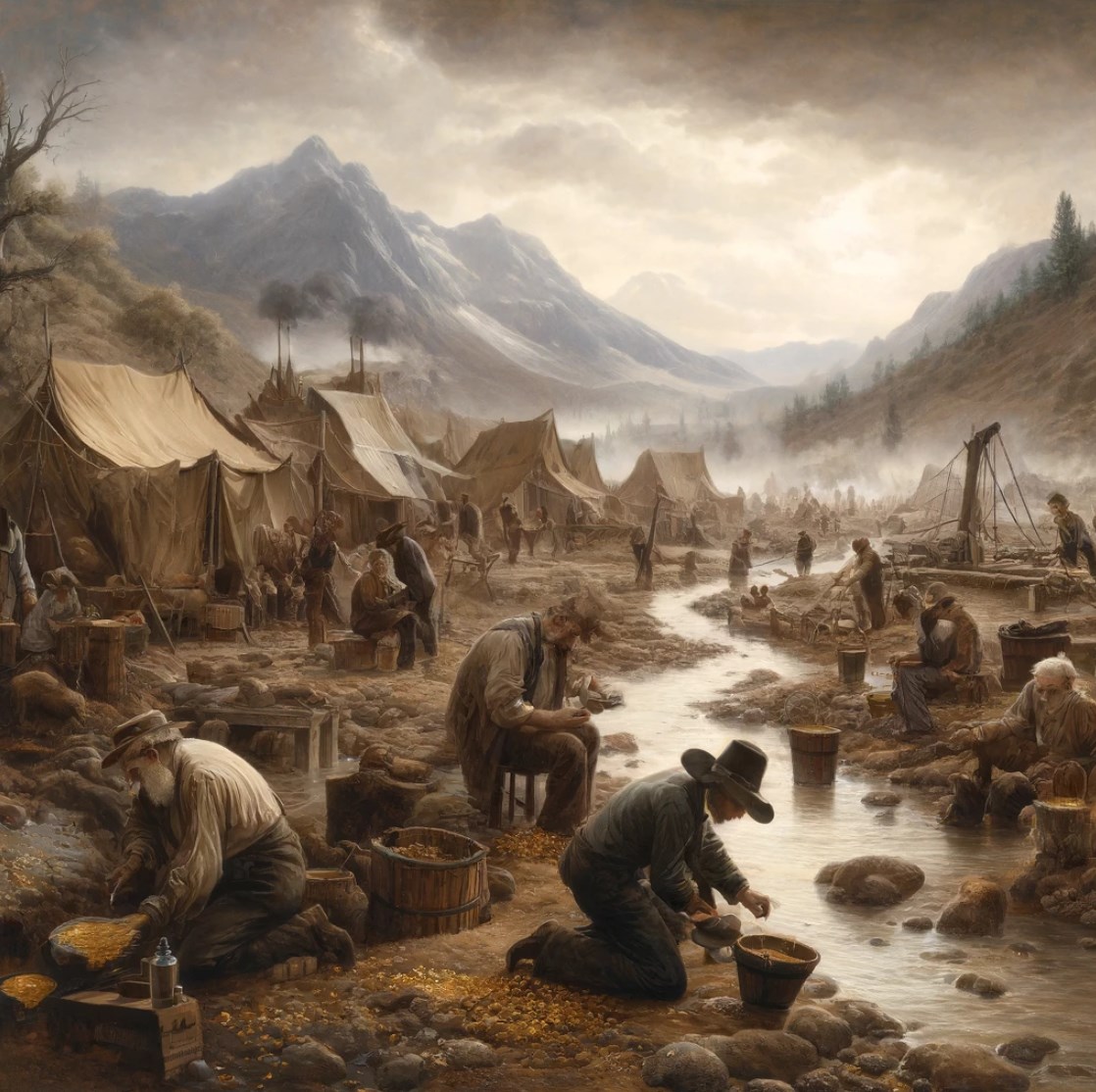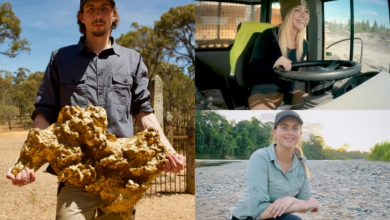9 Things You May Not Know About the California Gold Rush
On January 24, 1848, gold was discovered at Sutter’s Mill in Northern California. Get the facts on the rush for gold that followed.

1. California did not have the first gold rush in American history.
That honor actually belongs to North Carolina. Fifty years before gold was discovered at Sutter’s mill, the first gold rush in American history got underway after a 17-pound gold nugget was found in Cabarrus County, North Carolina. Eventually, more than 30,000 people in the Tar Heel state were mining for gold, and for more than 30 years all gold coins issued by the U.S. Mint were produced using North Carolina gold.
2. The Gold Rush was the largest mass migration in U.S. history.
In March 1848, there were roughly 157,000 people in the California territory; 150,000 Native Americans, 6,500 of Spanish or Mexican descent known as Californios and fewer than 800 non-native Americans. Just 20 months later, following the massive influx of settlers, the non-native population had soared to more than 100,000. And the people just kept coming. By the mid 1850s there were more than 300,000 new arrivals—and one in every 90 people in the United States was living in California. All of these people (and all of this money) helped fast track California to statehood. In 1850, just two years after the U.S. government had purchased the land, California became the 31st state in the Union.
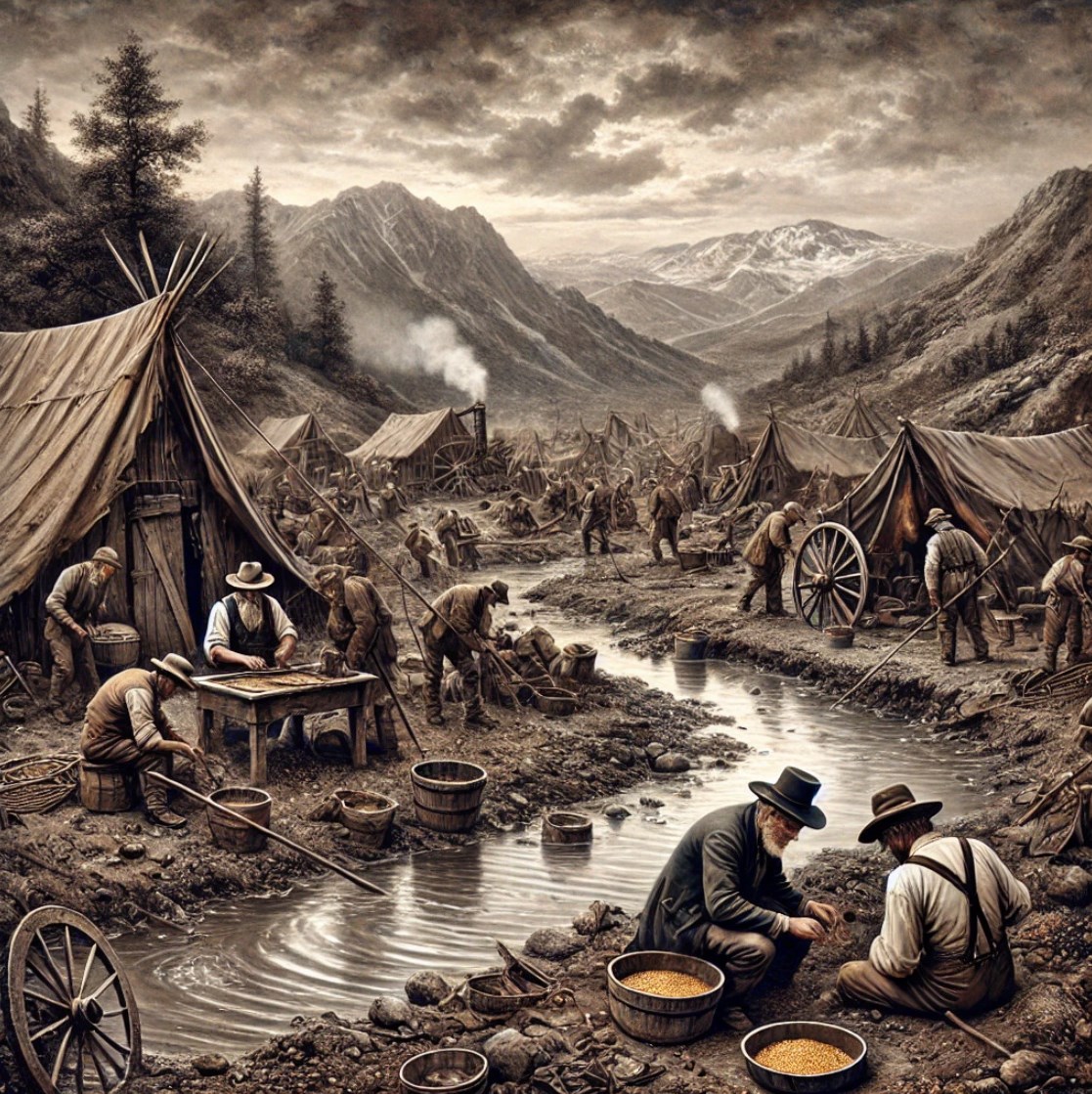
3. The Gold Rush attracted immigrants from around the world.
In fact, by 1850 more than 25 percent of California’s population had been born outside the United States. As news of the discovery was slow to reach the east coast, many of the first immigrants to arrive were from South America and Asia. By 1852, more than 25,000 immigrants from China alone had arrived in America. As the amount of available gold began to dwindle, miners increasingly fought one another for profits and anti-immigrant tensions soared. The government got into the action too. In 1850 California’s legislature passed a Foreign Miner’s tax, which levied a monthly fee of $20 on non-citizens, the equivalent of more than $500 in today’s money. That bill was eventually repealed, but was replaced with another in 1852 that expressly singled out Chinese miners, charging them $2 ($80 today) a month.
4. The Gold Rush proved dangerous and deadly for non-white people.
During the Gold Rush, violence against foreign miners increased, with beatings, rapes and even murders becoming commonplace. However no ethnic group suffered more than California’s Native Americans. Before the Gold Rush, the state’s native population numbered roughly 300,000. Within 20 years, more than 100,000 would be dead. Most died from disease or mining-related accidents, but more than 4,000 were murdered by enraged miners.
5. The Gold Rush was a male-dominated event.
Hundreds of thousands of people flocked to California to make their fortunes in the Gold Rush, but almost none of them were women. In 1852, 92 percent of the people prospecting for gold were men. The few women who did travel to the west eked out a living in the growing boomtowns, working in the restaurants, saloons and hotels that seemingly popped up every day. Some women’s journals back east, fearful of the trouble the men might get into without the civilizing influence of women, published stories and ran ads encouraging educated, morally minded young women to travel west to tame these men. Few took them up on this offer. The percentage of women in gold mining communities did eventually increase somewhat, but even in 1860 they numbered fewer than 10,000—just 19 percent.
6. Early sections of San Francisco were built out of ships abandoned by prospectors.
The Gold Rush conjures up images of thousands of “’49ers” heading west in wagons to strike it rich in California, but many of the first prospectors actually arrived by ship—and few of them had a return ticket. Within months, San Francisco’s port was teeming with boats that had been abandoned after their passengers—and crew—headed inland to hunt for gold. As the formerly tiny town began to boom, demand for lumber increased dramatically, and the ships were dismantled and sold as construction material. Hundreds of houses, banks, saloons, hotels, jails and other structures were built out of the abandoned ships, while others were used as landfill for lots near the waters edge. Today, more than 150 years after the Gold Rush began, archeologists and preservations continue to find relics, sometimes even entire ships, beneath the streets of the City by the Bay.
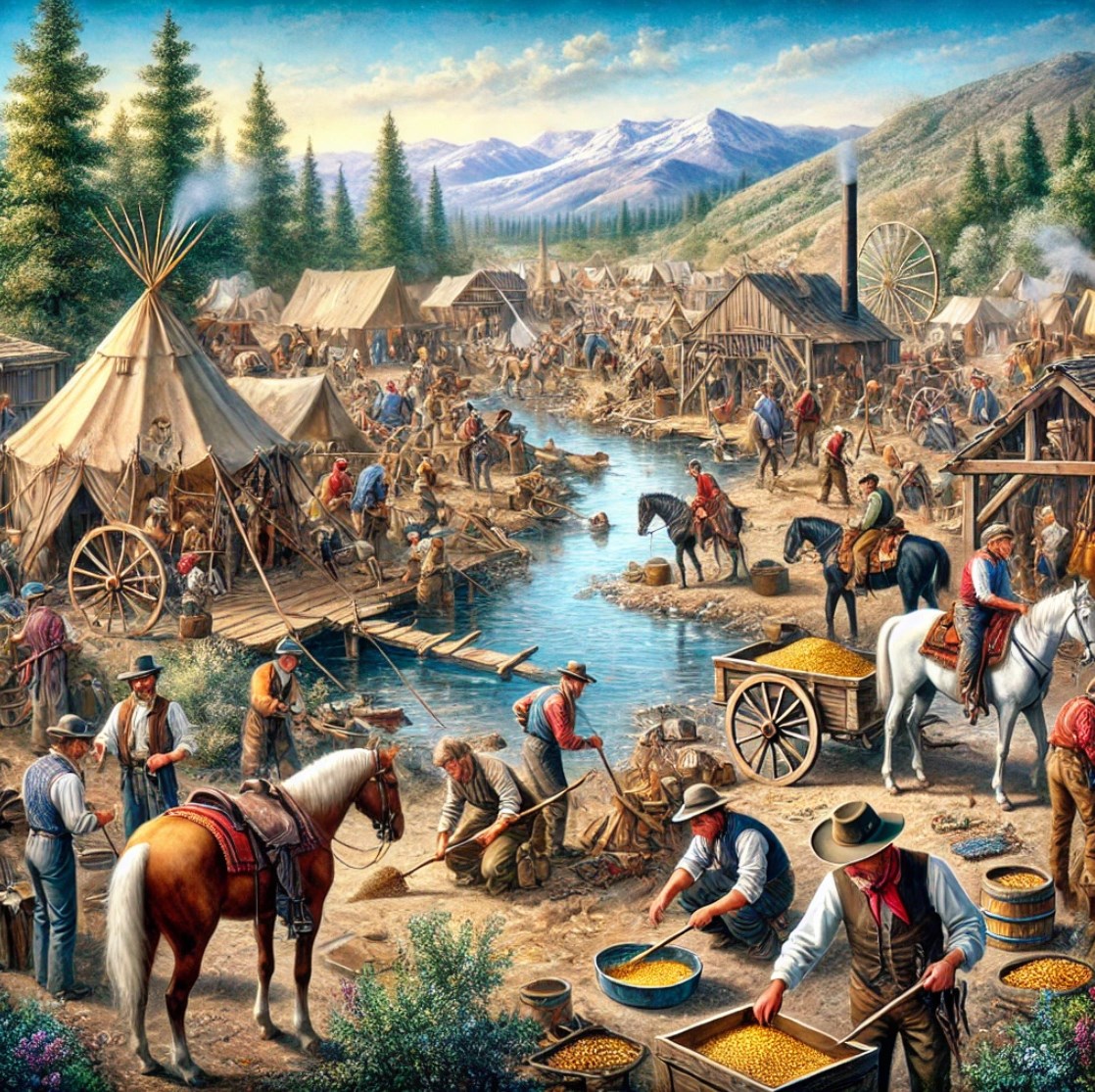
7. Prospecting for gold was a very costly enterprise.
Most of the men who flocked to northern California arrived with little more than the clothes on their backs. Once there, they needed to buy food, goods and supplies, which San Francisco’s merchants were all too willing to provide—for a cost. Stuck in a remote region, far from home, many prospectors coughed up most of their hard-earned money for the most basic supplies. At the height of the boom in 1849, prospectors could expect prices sure to cause sticker shock: A single egg could cost the equivalent of $25 in today’s money, coffee went for more than $100 per pound and replacing a pair of worn out boots could set you back more than $2,500.
8. More fortunes were made by merchants than by miners.
As the boom continued, more and more men got out of the gold-hunting business and began to open businesses catering to newly arrived prospectors. In fact, some of America’s greatest industrialists got their start in the Gold Rush. Phillp Armour, who would later found a meatpacking empire in Chicago, made a fortune operating the sluices that controlled the flow of water into the rivers being mined. Before John Studebaker built one of America’s great automobile fortunes, he manufactured wheelbarrows for Gold Rush miners. And two entrepreneurial bankers named Henry Wells and William Fargo moved west to open an office in San Francisco, an enterprise that soon grew to become one of America’s premier banking institutions.
One of the biggest mercantile success stories was that of Levi Strauss. A German-born tailor, Strauss arrived in San Francisco in 1850 with plans to open a store selling canvas tarps and wagon coverings to the miners. After hearing that sturdy work pants—ones that could withstand the punishing 16-hour days regularly put in by miners—were more in demand, he shifted gears, opening a store in downtown San Francisco that would eventually become a manufacturing empire, producing Levi’s denim jeans.

9. Thousands of Gold Rush prospectors got rich—but John Sutter wasn’t one of them.
John Sutter, the man whose land would become synonymous with the California Gold Rush, was a Swiss immigrant who fled Europe in the 1830s, leaving behind piles of unpaid debts. After several years of traveling throughout North America, he finally settled in the tiny outpost of Yuerba Buena (modern-day San Francisco) in 1839. With the assistance of the local Mexican government, Sutter quickly realized his goal of establishing an agricultural community on a 50,000-acre tract of land he called “New Helvetia,” Latin for “New Switzerland, which became an important outpost for emigrants traveling to the west.
It was during the construction of a sawmill on Sutter’s land along the American River that one of his employees first discovered the gold nugget that would change the world. Sutter, initially more interested in maintaining control over his property, tried to keep the discovery quiet, but the news quickly leaked out. Within months, most of his workers had abandoned him to search for gold themselves, while thousands of other prospectors overran and destroyed much of his land and equipment.
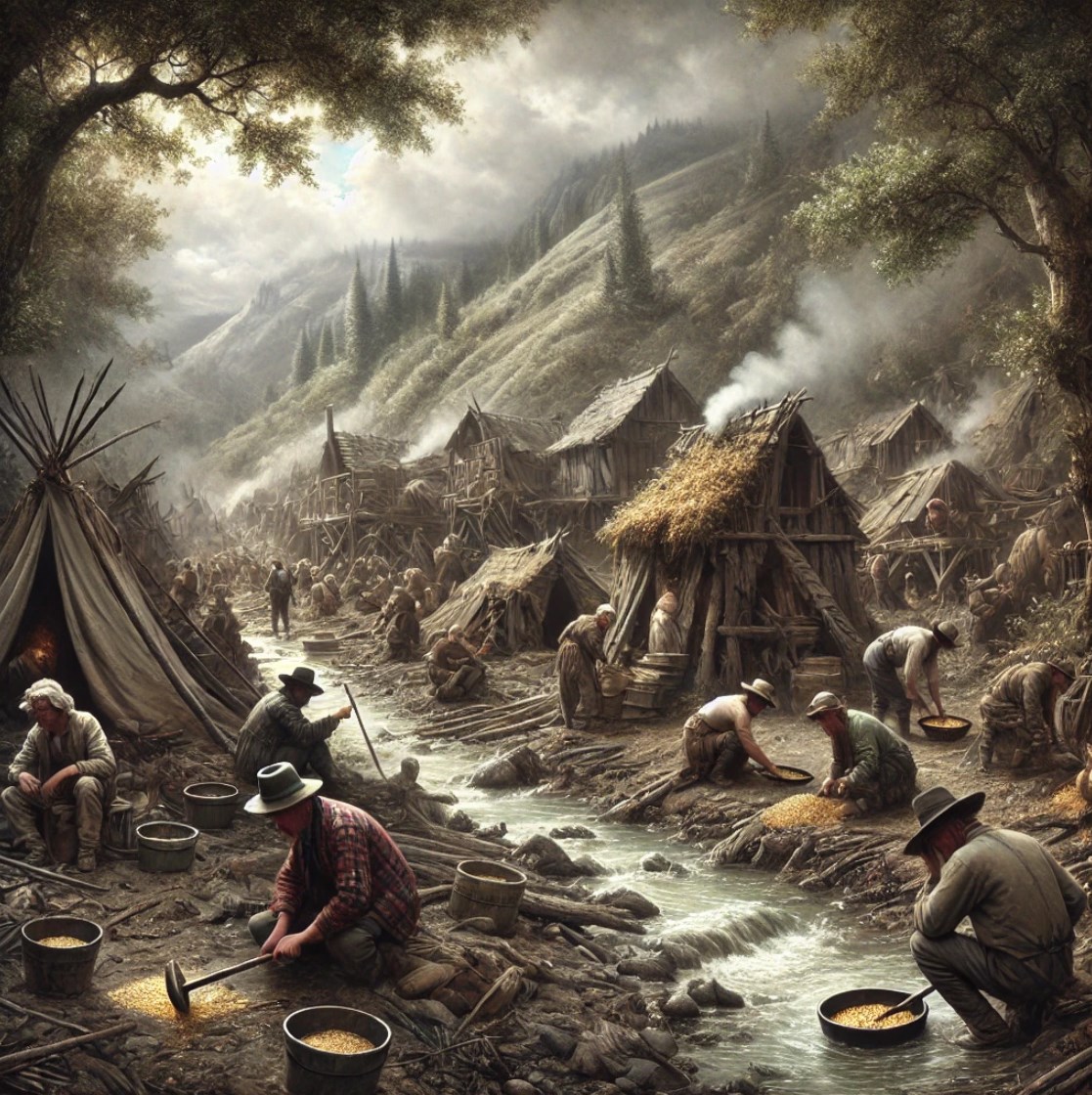
Faced with mounting debts, Sutter was forced to deed his land to one of his sons, who used it to create a new settlement called Sacramento. Sutter Sr. was furious—he had hoped the town would be named after him—but he had more pressing concerns. Nearly bankrupt, he began a decades-long campaign to have the U.S. government reimburse him for his financial losses, to no avail. While thousands became rich off his former land, a bitter Sutter retired to Pennsylvania and died.
